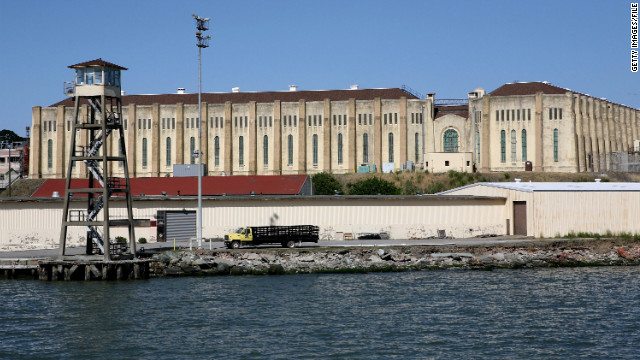By Brittney Hodnik
Impunity Watch Reporter, North America
WASHINGTON, United States – According to figures from 2010, eight percent of the prison population (or 124,400 inmates) is 55 years old or older. This number is up from three percent in 1995. A report released by Human Rights Watch acknowledged this change and demonstrated why this is such a problem.

Human Rights Watch issued a 106-page report titled “Old Behind Bars: The Aging Prison Population in the United States.” Not only does the report outline the problems, but also calls for changes on harsh sentencing rules, mandatory minimum sentences, reduced opportunities for parole, and additional changes in prison facilities.
Not only does the aging prison population cause problems for the prisons themselves, but also for taxpayers and policymakers. According to CNN, older prisoners incur medical costs that are three to nine times higher than younger prisoners.
Jamie Fellner, a Human Rights Watch special adviser who wrote the report, sees extreme comparisons between prisons and geriatric facilities. “U.S. corrections officials now operate old age homes behind bars,” Fellner said, as reported by TIME.
Elderly prisoners face many issues within the prisons themselves. The facilities are not equipped for wheelchairs; the elderly cannot easily climb into top bunks or up sets of stairs. Some facilities struggle with whether they need grab bars and handicap toilets for elderly inmates.
A.T. Wall is the director of the Rhode Island Department of Corrections and president of the Association of State Correctional Administrators. According to TIME, Wall said “Dementia can set in, and an inmate who was formerly easy to manage becomes very difficult to manage.” He continued on to explain, “There are no easy solutions.”
While the report wants changes in many areas of sentencing, Human Rights Watch is not advocating for complete release. According to The New York Times, Fellner said, “Age should be a get-out-of-jail-free card, but when prisoners are so old and infirm that they are not a threat to public safety, they should be released under supervision.” Fellner goes on to argue that if changes are not made soon, “legislatures are going to have to pony up a lot more money to pay for proper care for them behind bars.”
Besides lengthy sentences and more life sentences, the other factor that contributes to the elderly inmate population is that the number of old people entering for the first time, according to The New York Times.
Although the lacking budget in most states hinders significant change, some states are really making an effort. For example: The Louisiana State Penitentiary has a hospice program where fellow prisoners provide care for their fellow dying inmates. They provide everything from changing diapers to saying prayers, according to TIME.
Other states like Washington and Montana are looking into opening assisted living facilities for elderly inmates. Each facility is small – capacities of 74 and 120 beds respectively – but will provide specialized treatment for the elderly inmates.
The biggest dilemma is that some of the inmates are still dangerous and some are not, so it is difficult to create a bright line rule for release.
In a nation where sentences seem to get longer and longer, the problem is only going to get worse. The report points out that almost 10% of state prisoners are serving a life sentence, according to CNN. Furthermore, another 11.2% have sentences longer than 20 years.
While facility changes are beginning, the report points out the fact that guards and other correctional officers are not trained properly to deal with the elderly. Linda Redford, director of the geriatric education center at the University of Kansas Medical Center has helped train prison staff and inmates to better deal with geriatric prisoners. Even the medical staff is not prepared to deal with it: “They’re used to having to deal with issues of younger prisoners, such as HIV and substance abuse,” Redford said, according to TIME.
States and prisons will continue to try to deal with caring for elderly patients. Often times they are disregarded due to their inmate status. The Human Rights Watch report will hopefully point out some of the common problems across the nation.
According to the Lawrence Journal World, Feller begs us to ask the question, “How are justice and public safety served by the continued incarceration of men and women whose bodies and minds have been whittled away by age?”
For more information, please visit:
CNN — Human Rights Watch Expresses Concern for Aging Prisoners — 27 Jan. 2012
Lawrence World Journal — As Inmates Age, Medical Costs Soar — 27 Jan. 2012
TIME/AP — Number of Elderly Inmates Surges — 27 Jan. 2012
The New York Times — Older Prisoners Mean Rising Health Costs, Study Finds — 26 Jan. 2012